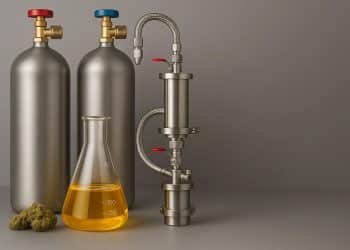Herbal extracts are more popular now than ever, but the art and science of extracting them goes back hundreds of years. When extracting herbal compounds, your goal is to both preserve the integrity of what was in the plant and avoid adding chemicals which can contaminate the finished product. In short, you want to get the desired extracts out of the plant without changing much else. It’s a simple concept, but it’s usually easier said than done.
Fortunately, this ancient problem has an equally time-tested solution that’s both simple and relatively efficient. Steam distillation is a fairly basic form of distillation that can be done with relatively low-tech equipment. However, with the benefit of modern technology, it can be made much more efficient, increasing yields and producing a high-purity product.
What is Steam Distillation?
If you’re familiar with the basic concept of distillation, steam distillation isn’t much different. Plant material is placed in a boiler. Steam is fed up into that boiler to heat the plant material. The temperature of the plant material increases, and the compounds in the plant change phase to vapor, leaving the plant and making their way with the steam up to the top of the still. There, the vapor moves down into a condenser where it runs in a tube surrounded by cold water allowing the vapour to condense back to its liquid form. At the end of the still is a collector. There, essential oils are separated from hydrosol, which is water mixed with botanical hydrosoluble compounds.
Why is Steam Distillation Great for Herbal Extraction?
Steam distillation has a number of advantages for herbal extraction. First, it’s simple and effective. This is an ancient method that’s still just as relevant today.
Then, you have to consider that it’s also relatively safe. Steam distillation doesn’t require harsh chemicals or high pressure. Most importantly, it’s safe for the consumer. Steam distillation doesn’t use chemical solvents, so there’s no need to worry about contaminants in the final product. That means it’s easy to make an organic product using steam distillation.
Steam distillation also has the advantage of temperature control. You can regulate the temperature of the steam thus the pressure within the boiler to ensure that the herbal compounds that you’re extracting are not altered or destroyed in the process. You can carry out the distillation process over a longer time with a lower heat to guarantee that you’re getting a result as close to what you’d find in the source plant as possible.
References:
1- Pearlstine E. Distillation of essential oils. University of Florida IFAS Extension. https://ufdcimages.uflib.ufl.edu/IR/00/00/38/77/00001/UW35500.pdf












